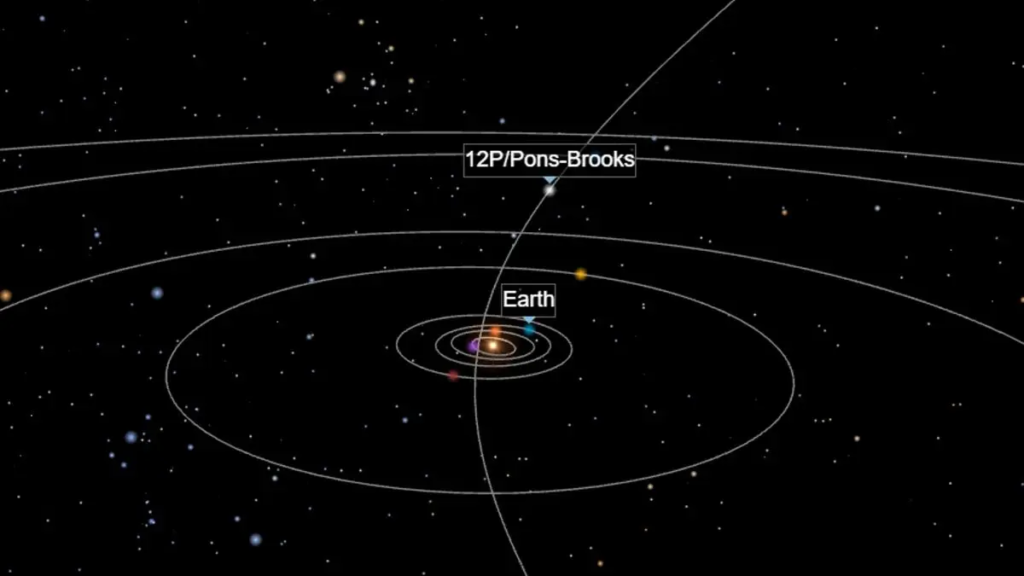
A massive comet, named the “Devil Comet” due to its horn-like appearance, is approaching Earth, three times the size of Mount Everest. It might be visible without a telescope in April 2024. Scientists are not worried about it hitting Earth. People are making jokes and wondering if it will affect their daily lives.
Scientists have announced that a comet is hurtling towards Earth, much larger than Mount Everest. In fact, it’s three times bigger. They call it the “Devil Comet” because it looks like it has horns.
They said this enormous comet known as 12P/Pons-Brooks might be visible without a telescope as it gets closer to Earth.
All you need to know about the Devil Comet
On October 5 and October 7, the Devil Comet erupted. This event provided astronomers with extra footage that revealed two horns emerging from the comet.
The comet is called a cryovolcanic, meaning it’s a cold volcano. It’s about 30 kilometers wide. Some experts joked that its strange shape makes it look like a spaceship from a science fiction story, like the Millennium Falcon from ‘Star Wars.’
But, what exactly is a cryovolcano?
A cryovolcano is a kind of volcano that spews out stuff like water, ammonia, or methane into icy environments, even colder than freezing temperatures.

Devil Comet: Should you be worried?
Don’t worry about a big collision with Comet 12P just yet. Scientists say it won’t get really close to Earth until 2024 when we can see it without a telescope. After that, it will return to space and won’t come close to us again until 2095.
Also See: NASA Unveils Discoveries Shedding Light On Earth’s Origins
According to Space Weather, all comets, including 12P, have a hard center composed of a mix of gas dust and ice. The fact that 12P contains a lot more ice and gas inside its core than most other comets distinguishes it.

It’s also important to note that this is the second time 12P has exploded. The first time was on July 20. In that eruption, the horn-like emissions were 7,000 times wider than the comet itself.
Astronomer Jean-Louis Pons found it on July 12, 1812. This comet is said to be one of 20 comets that are known to have ice volcanoes that are still active.
Comet sparks meme fest online
Social media platforms such as Instagram and Twitter were filled with reactions as people were surprised to find out about the comet.
While one user wrote, “An asteroid always coming to earth every day can I just live”, another joked, “Is school going to be canceled?”

[…] Why ‘Mother of Dragons’? It’s not because it breathes fire, but because it looks majestic and green, like something out of a fairy tale. Scientists think it could even be the parent of a meteor shower called the kappa-Draconids. Last July, scientists spotted the comet erupting for the first time in 69 years, and at the time, it sprouted horns that earned it the nickname “devil comet.” […]